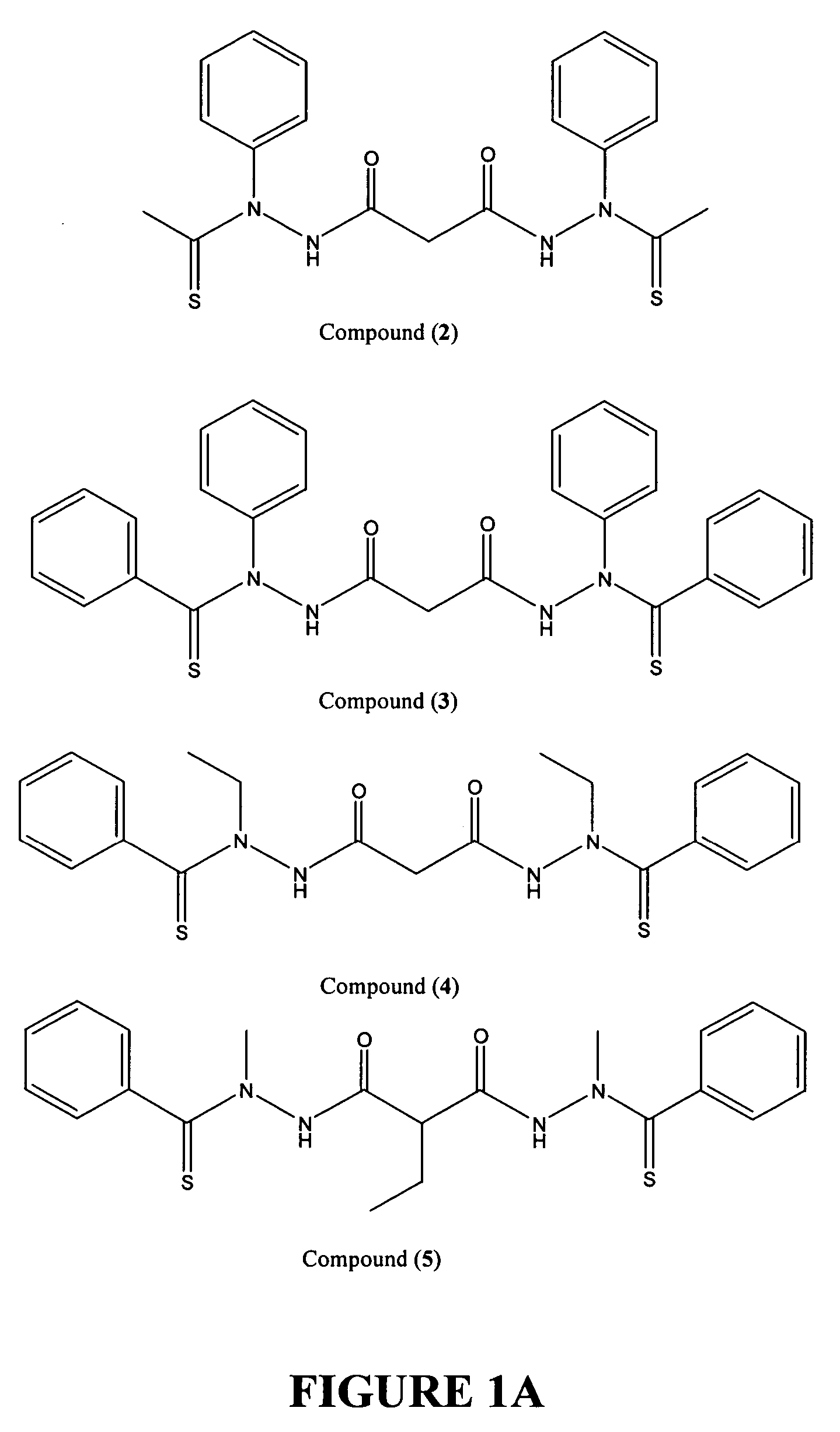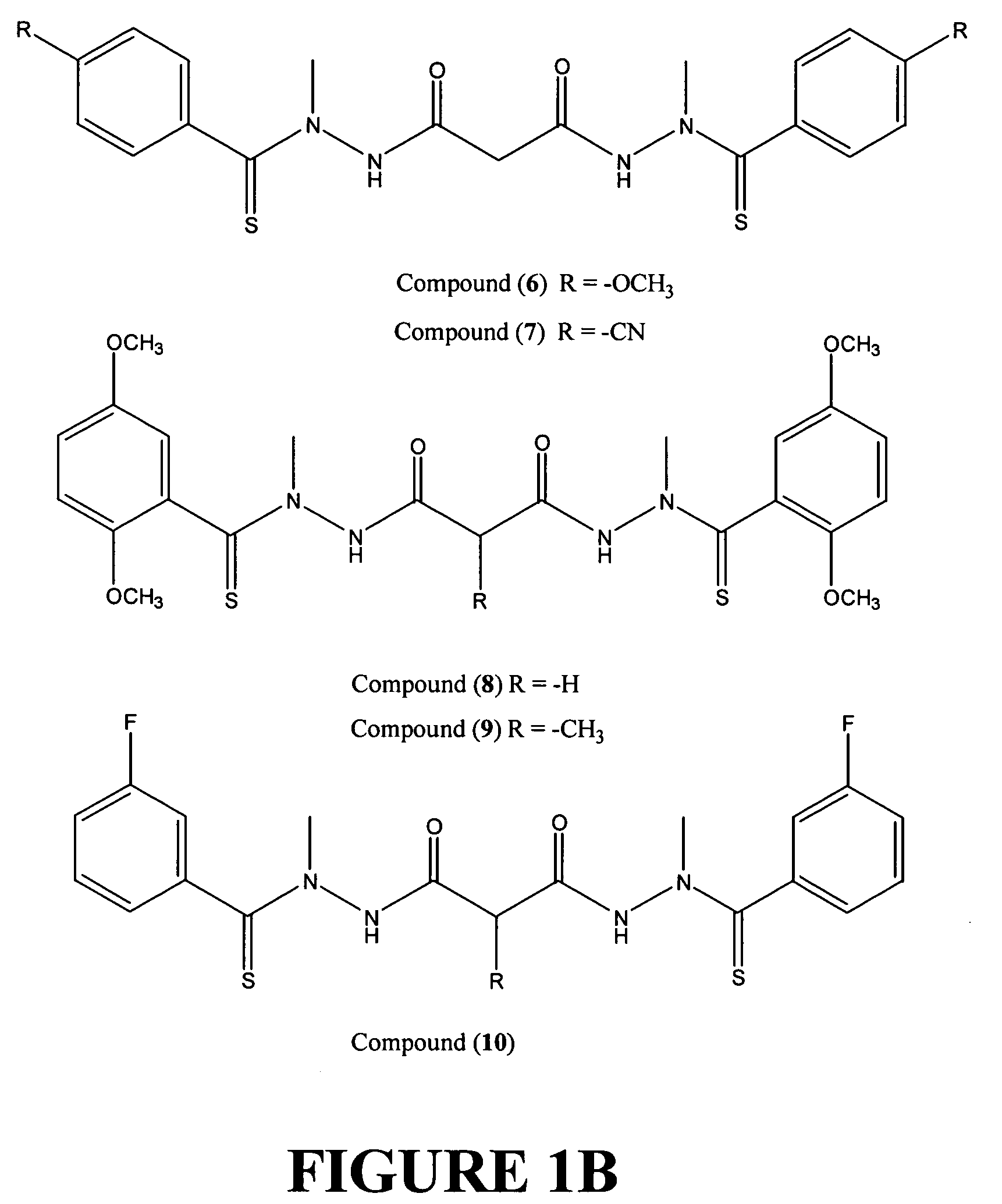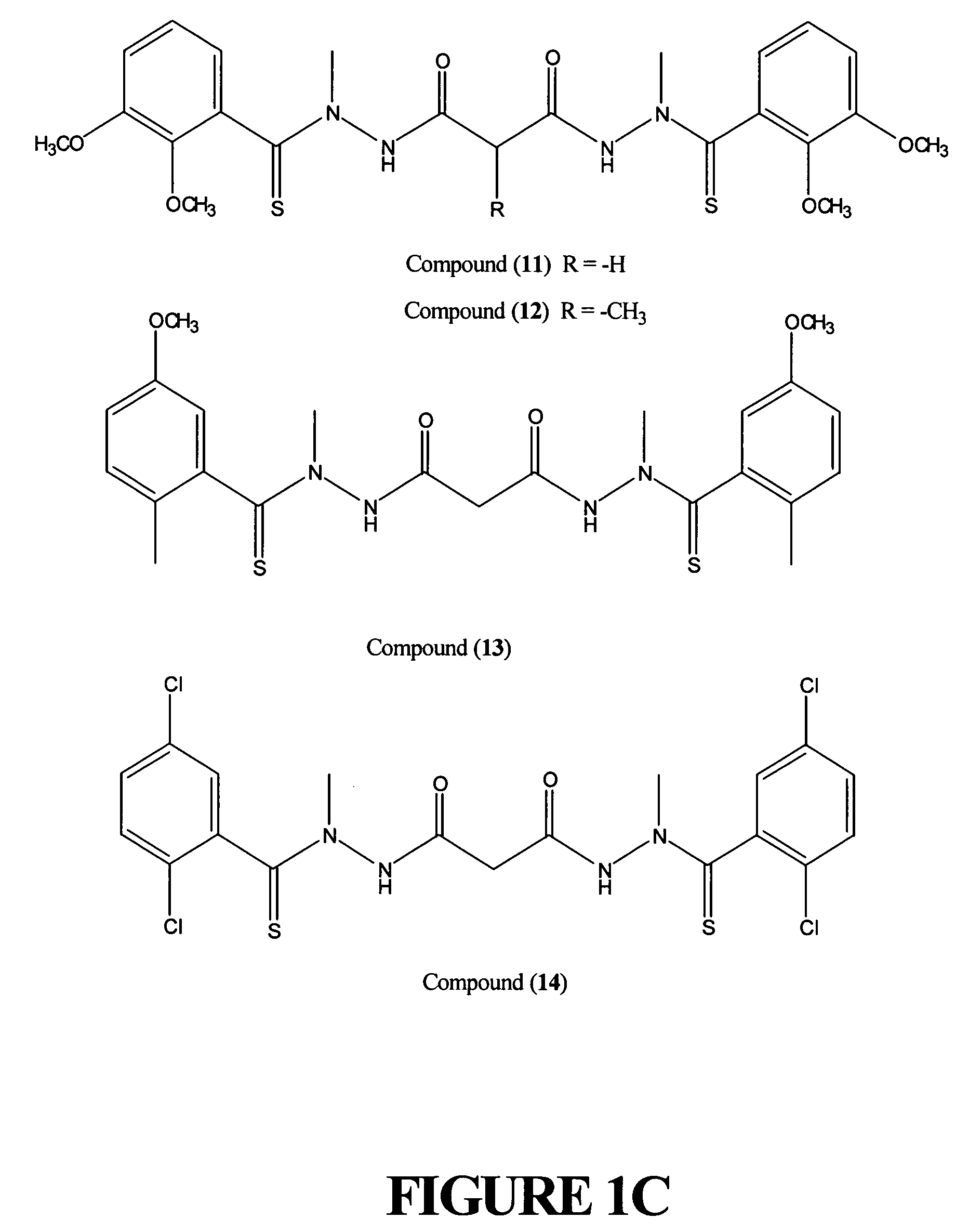Treatment for cancers
a cancer and cancer technology, applied in the field of cancer treatment, can solve the problems of many tumors developing resistance, little that can be done to halt or retard the progression of the disease, and the cancer does not respond to the anti-cancer therapy or its growth and spread is only slowed, so as to achieve the effect of minimal side effects and use at relatively high doses
- Summary
- Abstract
- Description
- Claims
- Application Information
AI Technical Summary
Benefits of technology
Problems solved by technology
Method used
Image
Examples
example 2
[0089]
Preparation of Thiocyclohexanoic acid N-phenylhydrazide
[0090]Phenyl hydrazine (5.4 g, 50 mmol) was dissolved in dry dichloromethane (50 mL) in a 250 mL round bottom flask. Di-tert-butyl dicarbonate (10.9 g, 50 mmol) was then added with stirring at 0° C. The resultant solution was then stirred under reflux for 3 h. Removal of the volatile components under reduced pressure afforded a colorless solid, which was washed with hexane and dried in vacuo. 10 g (yield 96%) of the product was obtained as a colorless solid, which can be used in the next step without further purification. 2.5 g (12 mmol) of this material was dissolved in dry pyridine (5 mL). Cyclohexanecarbonyl chloride (2.0 mL, 15 mmol) was then added slowly at 0° C. The red solution was stirred at 0° C. for half an hour and the resultant yellow suspension was stirred at rt for 3 h before pouring into ice-H2O (100 mL). The precipitate product was collected by filtration and washed thoroughly with H2O. After one recrystall...
example 3
[0093]
Preparation of 2,5-Dimethoxythiobenzoic acid N-methylhydrazine: DCC (4.5 g, 21.8 mmol) was added in one portion to a solution of 2,5-dimethoxybenzoic acid (3.6 g, 20 mol), methylhydrazine (1.2 ml, 23 mmol) and DMAP (30 mg, cat.) in CH2Cl2 (60 ml) cooled in an ice bath. The reaction mixture was stirred overnight at room temperature. The slurry was cooled at −20° C. for 1 h and filtered. The CH2Cl2 solution was evaporated and the residue was dried in vacuum. The resulting crude product was dissolved in toluene (50 ml). To this solution was added Lawesson's reagent (5.8 g, 14 mmol). The mixture was refluxed for 40 min, cooled to room temperature, and directly subjected to silica gel column chromatography (eluent: 25% to 35% ethyl acetate in hexanes) to give the 2,5-dimethoxythiobenzoic acid N-methylhydrazide (3.7 g, yield: 82%) as off-white solid. 1H NMR (300 MHz, CDCl3): δ 6.88-6.80 (m, 3H), 5.46 (s, 2H), 3.84 (s, 3H), 3.82 (s, 3H), 3.28 (s, 3H).
example 4
[0094]
Preparation of N-Malonyl-bis[N′-methyl-N′-(thiobenzoyl)hydrazide]: To a stirred solution of thiobenzoic acid N-methylhydrazide (0.166 g, 10 mmol), HOBtH2O (0.15 g, 11 mmol) and malonic acid (0.052 g, 5 mmol) in DMF (2 mL) was added DCC (0.22 g, 10.7 mmol) at 0° C. The resultant suspension was stirred at 0° C. for 1 h and at room temperature for 3 h. Precipitated material was filtered off and washed with EtOAc (3×15 mL). Combined filtrate and washings was washed successively with H2O (2×20 mL), 5% citric acid (20 mL), H2O (20 mL), Saturated NaHCO3 (20 mL) and brine (20 mL). After being dried over Na2SO4, the solvent was removed under reduced pressure to afford the crude product as a yellow solid, which was washed with warm EtOAc. 0.16 g (yield 80%) of pure product was obtained as a yellow powder. Rf 0.3 (Hexane / EtOAc 1:1 v / v); 1H NMR (CDCl3) δ 3.1-3.8 (m, 6H), 3.4 (s, 2H), 7.1-7.45 (m, 10H), 9.5-10.5 (m, 1H) ppm; ESMS calcd (C19H20N4O2S2): 400.1; found: 399.1 (M−H)+.
Preparation...
PUM
| Property | Measurement | Unit |
|---|---|---|
| Electrical resistance | aaaaa | aaaaa |
Abstract
Description
Claims
Application Information
 Login to View More
Login to View More - R&D
- Intellectual Property
- Life Sciences
- Materials
- Tech Scout
- Unparalleled Data Quality
- Higher Quality Content
- 60% Fewer Hallucinations
Browse by: Latest US Patents, China's latest patents, Technical Efficacy Thesaurus, Application Domain, Technology Topic, Popular Technical Reports.
© 2025 PatSnap. All rights reserved.Legal|Privacy policy|Modern Slavery Act Transparency Statement|Sitemap|About US| Contact US: help@patsnap.com



